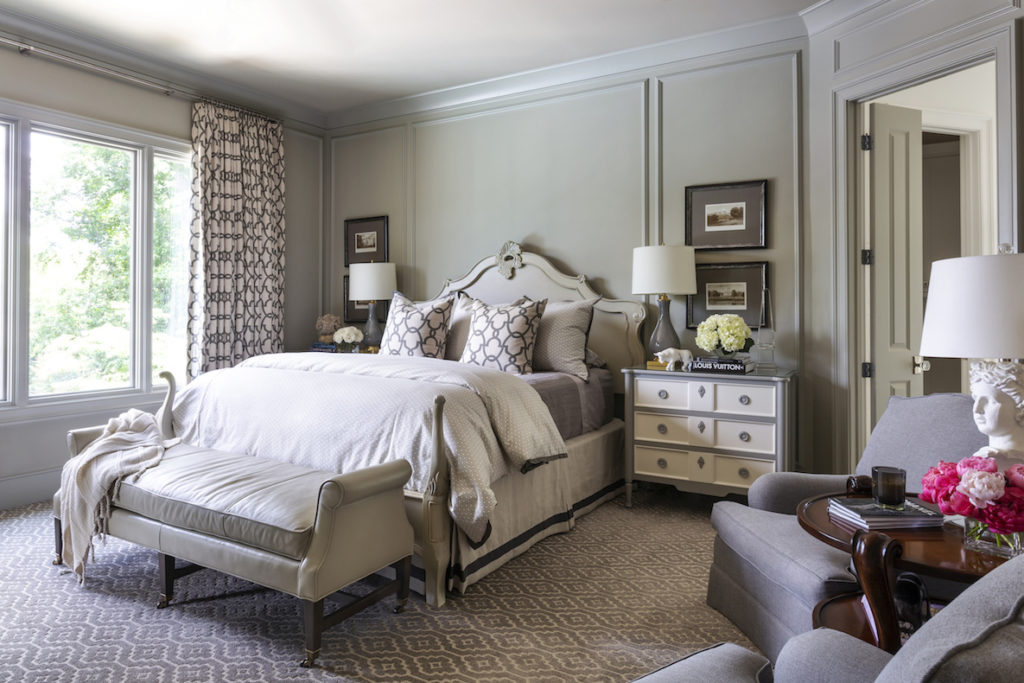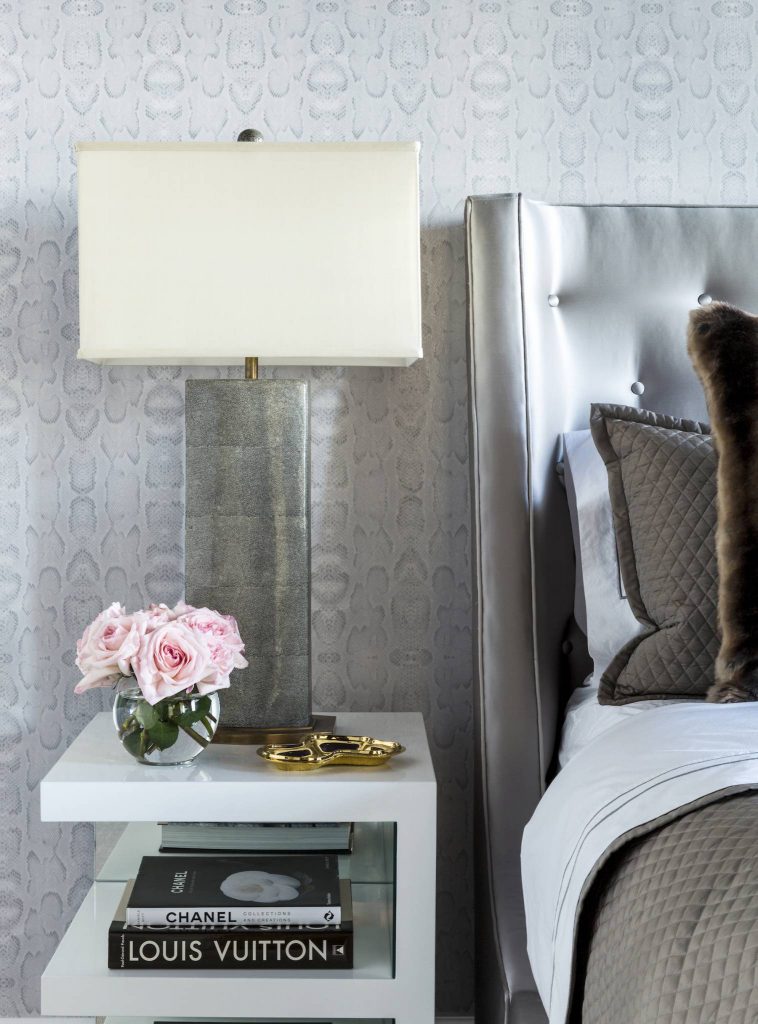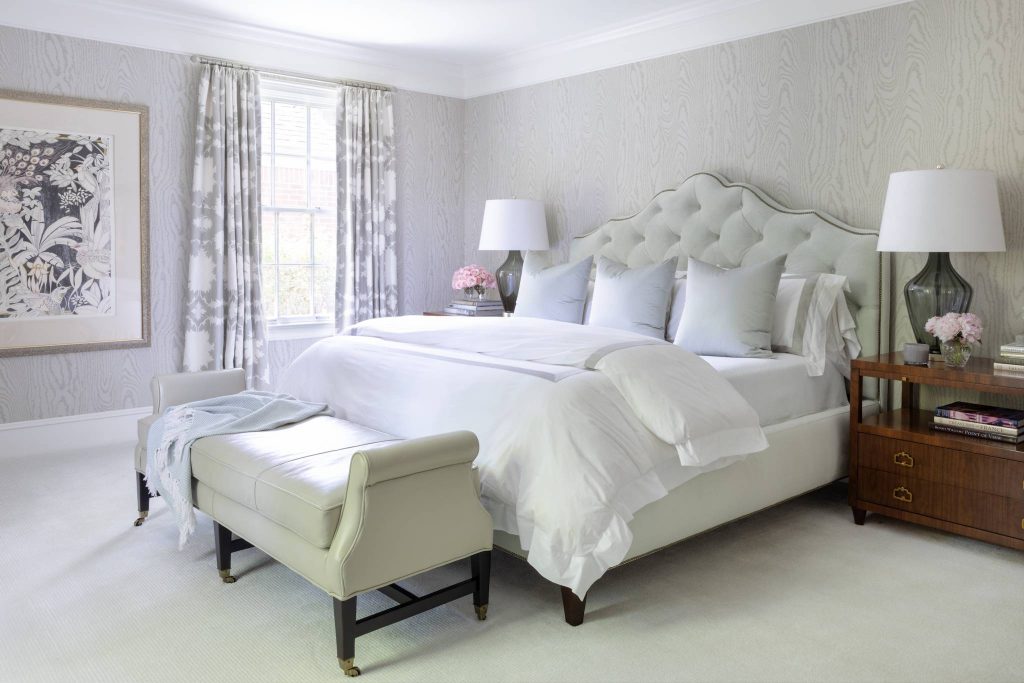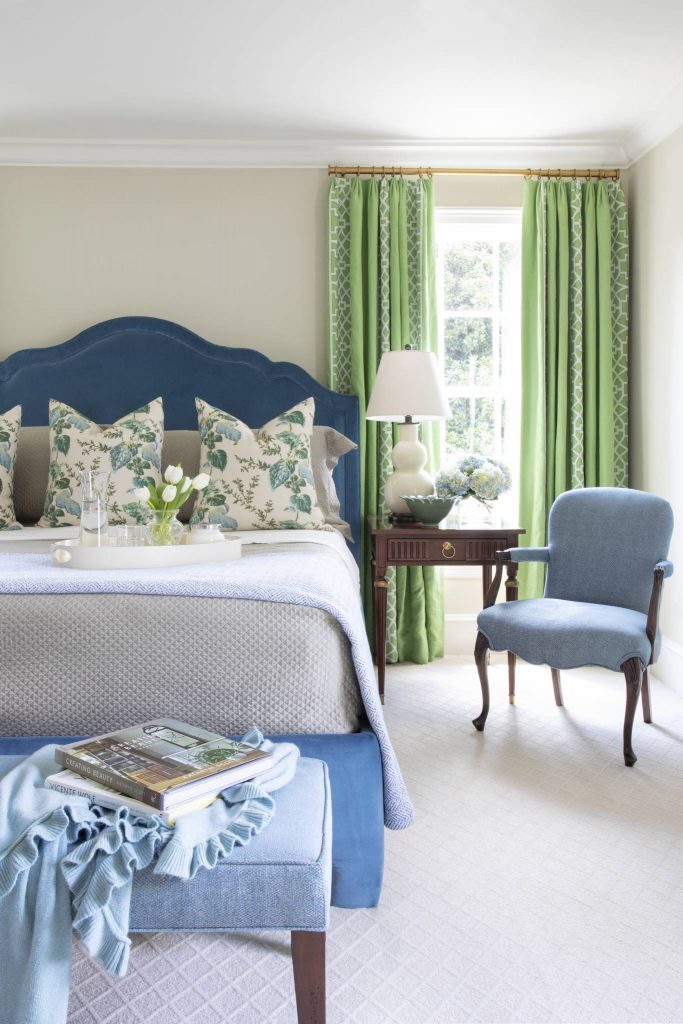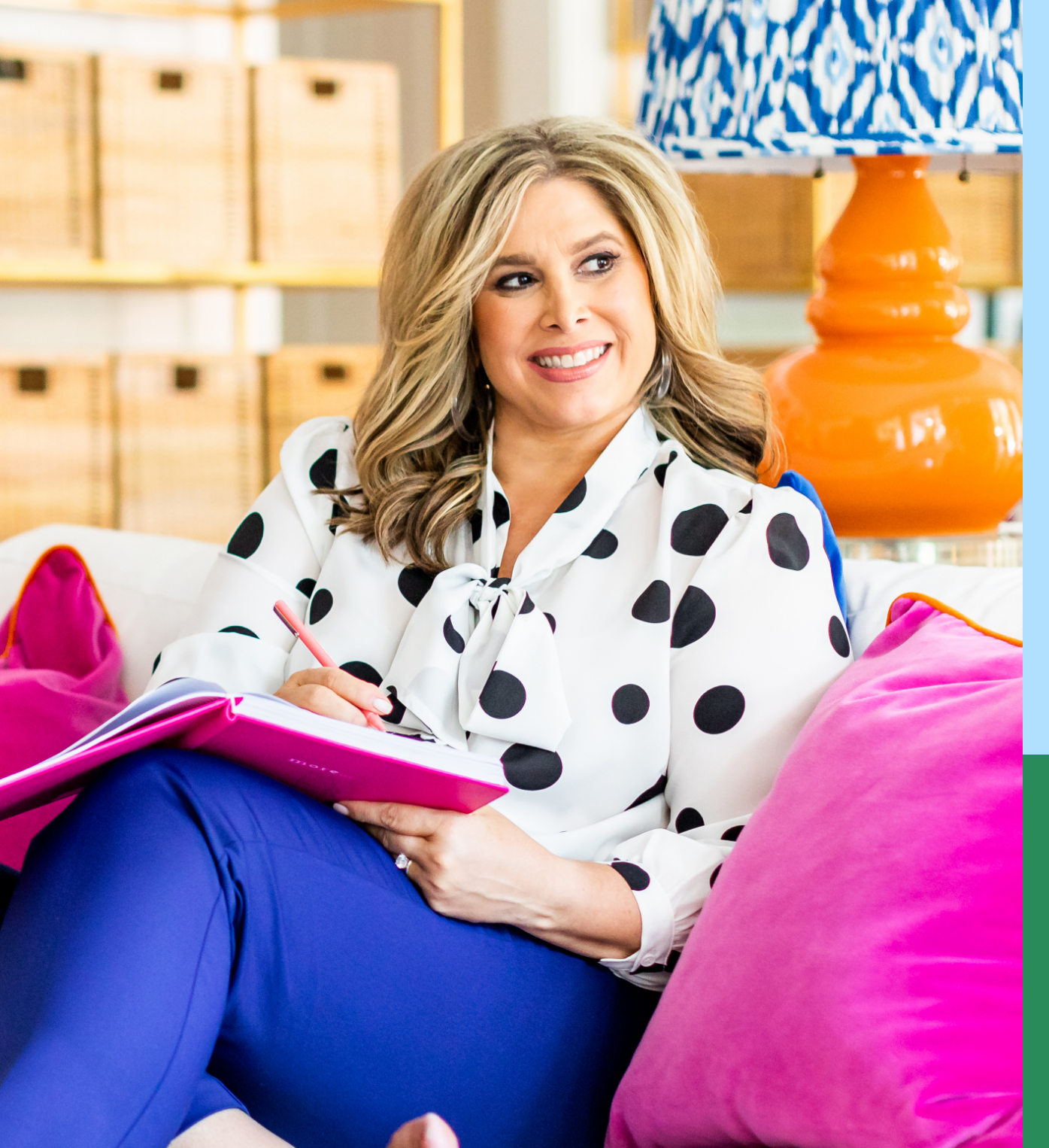What’s new, creative? Today I have something special for you.
Let’s talk about sleep. It’s the one areas of my health that I have never skimped on, mainly because I hate having the brain fog that comes with sleep deprivation. But so many busy entrepreneurs don’t get a healthy amount of sleep—7 to 8 hours is the recommended amount nightly. Some even pride themselves on how little they need.
Thankfully, people are trending back towards valuing sleep because of sleep champions like Arianna Huffington and Dr. Daniel Amen, and because studies show that lack of it is one of the biggest causes of heart disease, kidney disease, high blood pressure, diabetes, and stroke. Plus, sleep deprivation plays a big role in stress, depression, weight gain and obesity.
It’s not just over-working or our long to-do lists that are problems when it comes to sleep; our environments are a big culprit in the quality of our sleep, too.
I want to share a few bedroom design techniques that you can apply today to start getting better sleep.
Comfort
The comfort factor of your mattress, sheets, bedding, and pillows are important. How’s your bed? Does it make you feel like you’re in a luxury hotel? If not, what do you need to change about it for your best night’s sleep?
Lighting
Lighting—or lack of it, is also key to a good night’s sleep.
Why does a dark room matter? Light inhibits the secretion of melatonin, a hormone that naturally promotes sleep. “Even if you doze off, light can be detected through your eyelids—and your brain won’t produce melatonin if it’s confused between night and day,” says Joyce Walsleben, PhD, associate professor at New York University School of Medicine. “You want as much darkness in your bedroom as you can handle without tripping over things if you have to get up.”
But it starts before you even turn out the lights. Dim lighting while you get ready for bed helps get your body into sleep mode. Turn off bright overhead lighting and switch to a soft, bedside lamp to start this process. Your body is programmed to sleep when it’s dark, so you can encourage that rhythm by easing into nighttime.
Do you need to adjust your lighting and your “before bed” routine to increase the quality of your sleep? What needs to change?
Room darkening shades or curtains are very important. And if you are an interior designer who is sleep deprived, you already know this and have access to having the perfect window treatments fabricated, so if you haven’t, what are you waiting for? For everyone else, contact a designer or window treatment professional to get this issue resolved so you can catch more zzz’s.
Turn Off the Devices
Digital clocks, cell phones, televisions and other glowing electronics wreak havoc on our sleep and our circadian rhythms. A night-light in your hallway or bathroom is great for getting up in the night and better than turning on a ceiling light, which would disrupt sleep cycles and melatonin levels.
Are you guilty of having electronics in your bedroom? Will you commit to changing this habit for the sake of your brain, your energy and your productivity?
Temperature
Another important factor in your sleep is temperature.
Your body temperature naturally drops as you drift into sleep, so cooling down your bedroom can jump start the process and make it easier to doze off. Most experts advise setting your thermostat 5° to 10° lower than your average daytime temperature.
A tip I often use for married clients (and in my own bedroom), when spouses like different temperatures is to layer the bedding differently on each side of the bed particularly during especially hot or cold months. For me, a twin-sized electric blanket for the coldest of nights of winter fits perfectly on my side of the bed while my hot-natured husband stays cool.
Noise
If noise is an issue for your sleep quality, a white noise machine or even earplugs can be your best friend. There are many great sleep apps now including guided sleep meditations, but if using your phone in this way, be sure to use the night shift setting on your display to filter the blue light.
And if you do fall asleep to music or mediation, use a “sleep” function that can shut down automatically after 30 or 60 minutes, recommends William C. Dement, MD, professor of psychiatry at Stanford University and author of The Promise of Sleep. As your body transitions through different stages of sleep, unexpected noise may wake you during shallower cycles.
Don’t discount the power of a good night’s rest, on your productivity, creativity, and profitability.
According to a Harvard report, not getting enough shut eye has been shown to eat away at the very skills you need most to thrive in the workplace. The report lists side effects including decreased productivity, reduced efficiency, and an ability to deliver more errors and cause more accidents.
Then there’s the financial cost. A study by the RAND Corporation found that because of sleep deprivation, the U.S. sustains economic losses of up to $411 billion a year.
And what about creativity—something critical to our work as Creative Entrepreneurs? Creative thinking is essential to coping with new and complex challenges in the workplace. A skill that Greg Wells, a physiologist and assistant professor at the University of Toronto, says is one that will become even more critical with the advent of artificial intelligence. When it comes to solving a problem, or delivering a new innovative approach, reducing your sleep hours is exactly the opposite of what your brain needs.
Modern science has established a solid connection between sleep and creativity. It shows that the bottom line is that when we’re sleep-deprived, our ability to think creatively suffers.
Using these design techniques to control comfort, lighting, and temperature in the bedroom can do wonders for your sleep, your work and your life. Adding aesthetics into the list of bedroom priorities like using calming color schemes, will also make your bedroom a more inviting place to rest and relax.
If you want to go deeper into designing a home that truly supports you, I created this free downloadable guide with more easy-to-follow tips and advice to create the home of your dreams. Once I started following these steps, I saw my income double in less than a year! Get your free Home Design Blueprint now!
I hope this is helpful for you! Leave me a comment below and let me know how you’re going to make tweaks at home to get better sleep!
xo,


